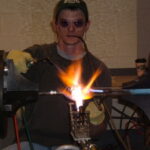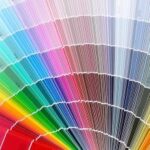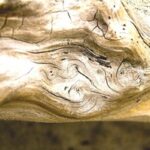Summer is the time for blowing bubbles, painting faces, and making sand scultptures. These best homemade summer science projects for little kids will teach your kids to make their own bubbles, face paint and sculpture sand as well as bath paint. They’ll enjoy the creation of their own products as well as the artistic expression of using them.
The process of making these products will give kids a chance to see science in action- from measuring and pouring to observing the effects of combining ingredients, little kids can learn scientific principles doing these simple projects.
An article on best homemade summer science projects would hardly be complete without instructions for homemade play dough. So, this article contains a link to an excellent article on making homemade play dough by AC Content Producer Tricia Goss.
Homemade Summer Science Project: Bubble Soap
Homemade bubble soap is fun to make and delightful to use.
Little kids love waving bubble wands, and those little commercial bottles of bubble soap get used up almost as fast as mom can open them. With this bubble recipe, your child can produce a large quantity of bubble soap in a jiff. He gets practice measuring and pouring, too. And once the bubble soap is ready, he can experiment with different household materials to see which makes the best bubble wand.
Ingredients:
liquid dish washing soap
water
glycerin (available in drugstores)
The exact proportion of dish washing soap to water varies among different recipes. Use a quality dish washing soap and somewhere between six and eight parts water to each part dishwashing liquid. Experiment. That’s part of the fun. Provide a container with a tight cover and let your child measure out the dishwashing liquid and water and mix them together. An adult should measure and add the glycerin. Two tablespoons per quart of bubble solution is plenty.
When it’s time to blow bubbles, try different household objects- bent picture wire, plastic six pack framing, straws- as bubble wands. See which one makes the most interesting bubbles. Try to figure out why. Observe relationships between the shapes of bubbles and the shapes of the bubble wands.
Homemade Summer Science Project: Face Paint
This summer, make homemade face paint that is easy to use and easy to wash off!
Ingredients:
Cold cream
Corn starch
Food coloring
Small bathroom paper cups or miniature muffin tins are great containers to hold homemade face paint. Place 1-2 T. of cold cream in each container. Stir in about ¼ t. of corn starch. Add a few drops of food coloring.
This is fun for kids to do themselves with the caveat that they should only use 2-3 drops of food coloring and no more than 2 colors if they don’t want their color to look like mud.
Kids can learn the science of color mixing from this experiment. You can also show them how the food coloring alone stains their fingers but once bound to other ingredients in the face paint no longer stains them.
Homemade Summer Science Project: Bath Paint
After a day of summer fun, make the necessary bath fun, too with this homemade bath paint..
Kids can use their hands to spread this bath paint on the tub and tile- and even themselves!- while they are bathing. Although this “paint” includes food coloring, it easily washes off both kid and bathroom surfaces.
Spray old fashioned foam shaving cream into each of twelve muffin cups on a standard muffin tin. Add a few drops of food coloring to each. Stir thoroughly.
This is fun for kids to do themselves with the caveat that they should only use 2-3 drops of food coloring and no more than 2 colors if they don’t want their color to look like mud.
Paint away!
In addition to the paint science tips above, you can use this project to teach kids about water solubility as their paint dissolves in the bath water.
Homemade Summer Science Project: Sculpture Sand
Ever wonder how those marvelous sculptures at sand sculpture competitions stay put? Sometimes they are made from ordinary beach sand and water but many times, they are given a boost with special sculpture sand trucked in for the occasion. This may be simply sand with a special shape grain or it may be sand with thickeners added.
You can make a homemade variety of sculpture sand using this easy recipe. Kids will have fun molding a sand that will actually hold its shape. This sand will harden if left in the open air. However, the sand can be kept soft for at least a day or two by placing it in a plastic container with a air seal cover.
Using the recipe for this summer fun sculpture sand requires adult supervision.
In a large cooking pot, mix about 2 parts play sand to one part water and one part corn starch. Cook on low heat, stirring, until the sand thickens. Let cool before sculpting.
When sculpting, remember to compact the sand for best results. If you want to make a quasi permanent artwork from the sculpted sand, let it dry overnight.
Make one sculpture from untreated sand and water and one from this special sand sculpture sand. Compare the differences.
Homemade Summer Science Project: Play Dough
In case you missed it, AC Content Producer Tricia Goss wrote an article about making homemade play dough, earlier this month. Instead of including more play dough making instructions here, I will refer you to her excellent article. Click on the highlighted phrase “play dough” above to access her article.
Have fun becoming a summer scientist and doing making these simple products. Measure, mix, color, observe, guess at results, and explain. These are foundations for good science that even a preschooler can grasp.




